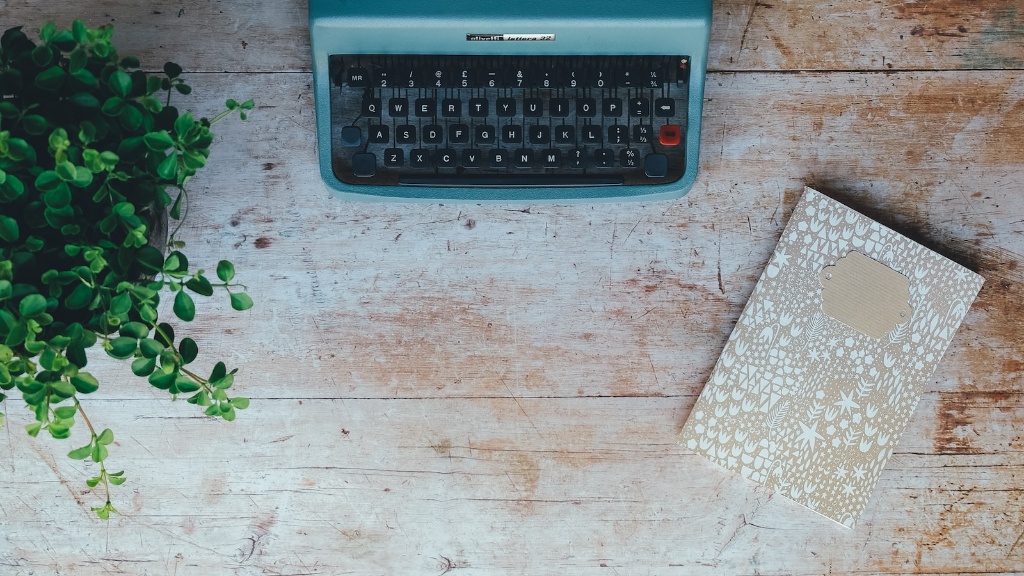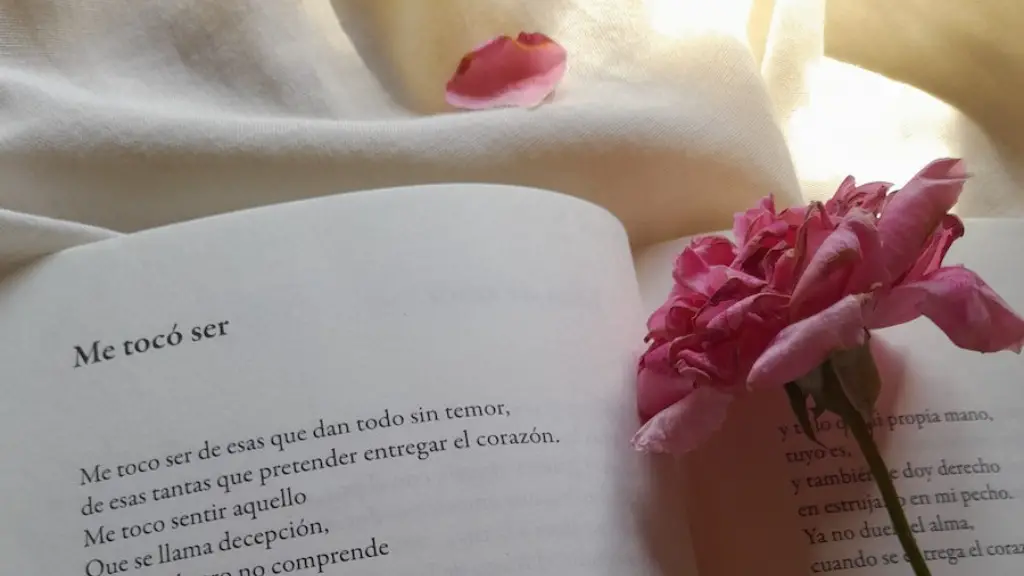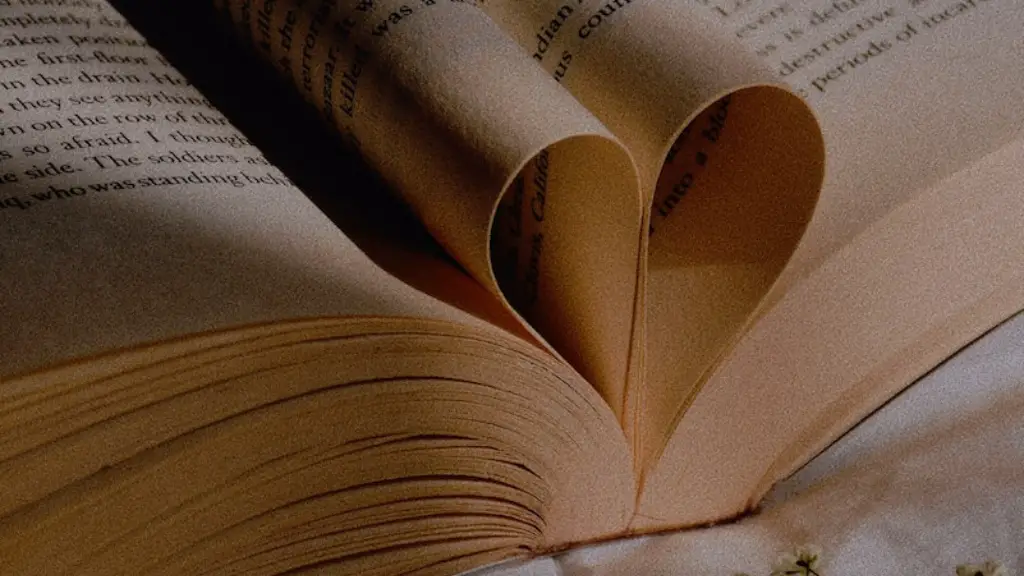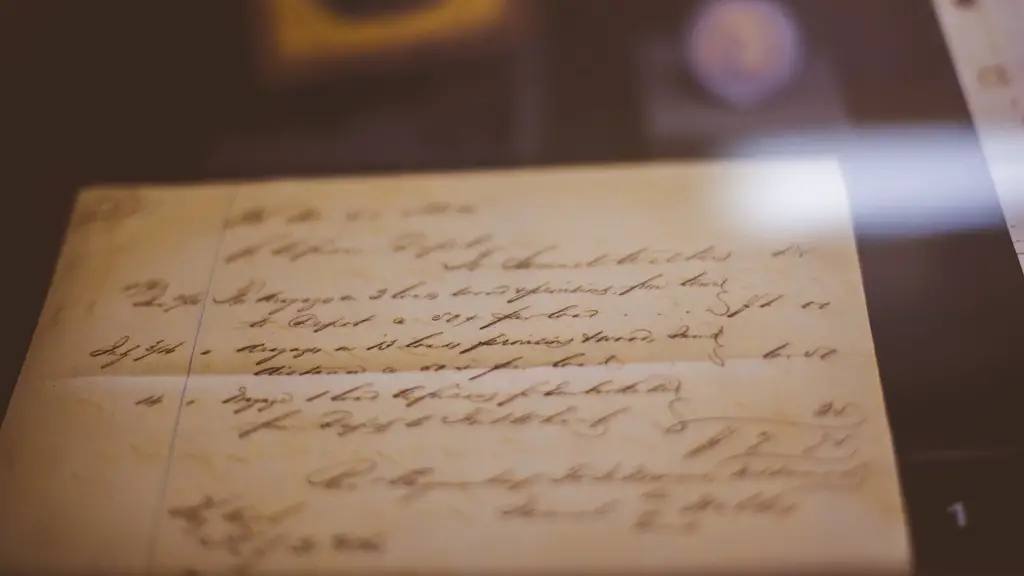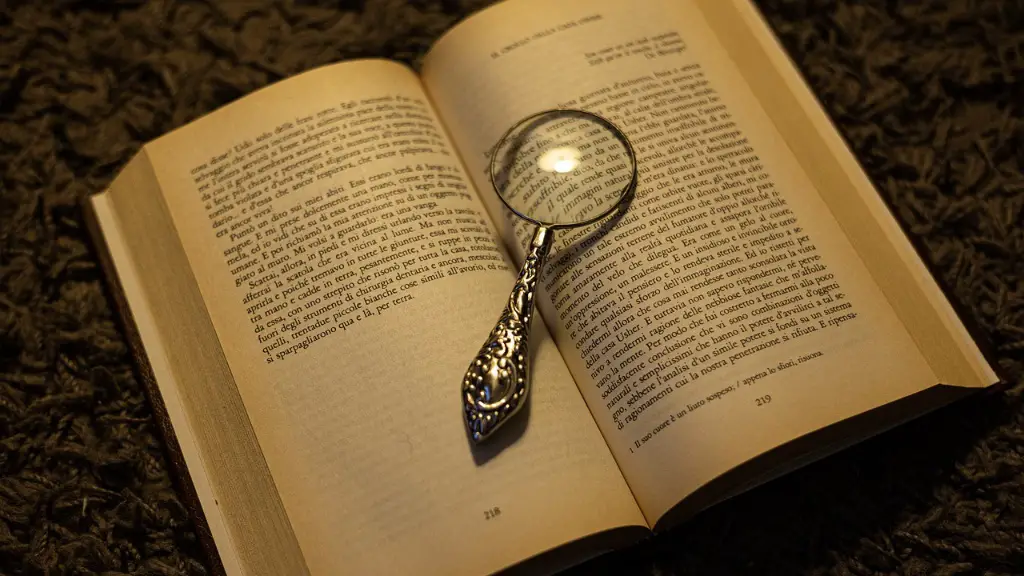Imagery in poetry is the use of words that evoke sensory images, metaphors, and similes to give readers an idea of what the poet sees and feels. It is a technique used by poets to create vivid and powerful scenes through words. By describing and comparing events, things, feelings and ideas, poets can capture the essence of a moment and express what they see, feel, think and experience. Imagery can also be used to provide layers of meaning and create an atmosphere of suspense and mystery. Through vivid imagery, poets can show instead of tell and draw in their readers to feel as if they are part of the poem.
A poem’s imagery often starts with its title. The title can give an indication of the mood or theme. For example, a poem with the title “The Dark Woods” will likely have dark images of a dark and menacing forest, with shadowy creatures lurking in the shadows. Similarly, a poem with the title “The Path of Innocence” might have images of a bright, sunny field with a few small paths winding through it, giving the reader a feeling of innocence. Having an idea of the poem’s subject matter in mind can also help readers to interpret the poem’s imagery.
The use of imagery in poetry enables poets to capture diverse and sometimes ambiguous emotions in words. Through carefully chosen images and descriptions, a poet can explore deeper nuances that can not be conveyed with literal language. For instance, via the use of metaphor, the poet might portray a situation or object as something it is not, allowing the reader to feel the same sense of emotion without being explicitly stated. For example, an emotional experience can be compared to a wild storm or an idea can be represented by a river current. With imagery, a poet provides readers with an emotional experience while also communicating their feelings in a creative and powerful way.
Imagery can also be used to evoke powerful memories and feelings. Vivid descriptions of sights, sounds, and smells can harken back to a particular moment that readers can relate to. Through imagery in a poem, a reader can experience a vivid memory or feeling even if he/she has never gone through the same experience before. This can add a compelling layer to a poem and make it more personal and meaningful to the reader.
By combining sensory imagery, metaphor and simile, a poet can create an atmosphere of suspense and intrigue that engages readers from the very beginning. It can also help to create suspense and tension throughout a poem, making it more exciting to read and further motivate the reader to explore deeper ideas. In this way, the poet’s use of imagery can help to draw readers in and make them feel emotionally connected to the poem.
Language in Imagery
The use of language in imagery is essential in creating vivid and memorable scenes in a poem. Precise choice of words can help to make a simple image more vivid, move readers to a certain place, and set the tone and mood of the poem. Poets often choose words that evoke emotion, such as hope, despair, love, anger, joy or sorrow. The language chosen can also be figurative, using metaphor and simile to create a powerful effect that readers can relate to and remember. These tools create an extra layer of meaning that can bring a poem alive.
Poets can also use sound devices such as alliteration, rhyme and assonance, to create interesting and poetic sounds. The use of rhythm, stressed and unstressed syllables, repetition and pauses also helps to create a poetic flow. All these elements are essential for creating effective imagery in poetry and will enable poets to tell stories and create powerful emotions through simple words.
Passion of Imagery
Imagery in poetry can provide readers with more than a description. It is a powerful tool which poets use to capture their feelings and share their innermost thoughts. Through imagery and symbolism, a poet can portray their passion, allowing readers to form an emotional connection to the poet and the poem. By connecting to the imagery, readers can better understand the author’s feelings and experience the poem on a more personal level.
Imagery also acts as a bridge between the reader and the poem. Images can help readers to connect with the poem, become emotionally involved and evoke a strong response. As imagery can help to create a more vivid experience, readers are often able to relate to the poet’s feelings and journey. This can make a poem that much more powerful, allowing readers to really appreciate the poet’s message.
Subtlety of Imagery
The subtlety of imagery can be an integral part of the poem. While imagery can help to express different ideas in a bold and vivid way, it can also be used to gently suggest, hint and reveal hidden meaning. Subtler elements, such as metaphor and symbolism, can be used to suggest personal feelings and emotions in a more discreet way. This enables the poet to share their ideas in a poetic and subtle way, giving readers the space to interpret the poem in their own unique way.
As poets, we should always be conscious of the imagery we use in our poetry. While we can draw inspiration from the world around us, it is important to use imagery that resonates with readers. By carefully choosing our language, we can create powerful imagery that can engage readers and make our poems more meaningful and powerful.
Crossroads of Imagery
The crossroads of imagery is an important part of poetry. Many poets use imagery to create a wider context and explore multiple points of view. By combining narrations, descriptions, symbols and metaphors, poets can develop a stronger story and create a more meaningful poem. Through crossroads imagery, poets can explore characters and plotlines in a creative and effective way, allowing readers to experience the story in a more dynamic and meaningful way.
Crossroads imagery can also be used to explore the complexities of life and relationships. By using images that represent conflicting emotions or ideas, poets can represent both sides of a situation and explore the depth of human experience. This type of imagery can help to bring to life complex issues in ways that words alone cannot. Through crossroads imagery, poets can create a vivid and powerful vision that stimulates readers’ emotions and encourages them to think more deeply about the poems’ messages.
Realistic Imagery
Realistic imagery is a type of imagery that directly mirrors the reality of everyday life. It is often used to create relatable experiences in the reader’s mind that they can personally relate to. For instance, descriptions of the everyday such as how sunlight reflects off the water or the smell of a flower can evoke strong memories and feelings of familiarity in readers. This type of imagery helps readers to feel connected to the poem on a more personal level and increases the appreciation of the poem.
Realistic imagery can also be used to represent emotions in a more vivid and understanding way. By incorporating words that embody concepts such as heartache, joy, and love, poets can create powerful and emotive experiences for readers. This type of imagery gives readers a better understanding of the poet’s feelings, creating an emotional bond between the poem and the reader.
However, poets should also be mindful of using this type of imagery too much, as it can make a poem seem overly literal and lack poetic depth. Realistic imagery can be a powerful tool when used in balance, allowing poets to create powerful emotional experiences that resonate with readers.
Uncertainty of Imagery
The power of imagery also lies in its ability to create tension and uncertainty. Through mysterious, dark or surreal images, poets can create a feeling of suspense and mystery that draws readers in and engages their attention. By using carefully chosen words to hint at darker and more ambiguous ideas, poets can take readers on a journey, as they explore the depths of the poem for clues.
Uncertainty can also be used to encourage readers to think more deeply about a poem’s meaning. By leaving some elements of a poem ambiguous, poets can create an open-ended and thought-provoking piece that forces readers to explore the poem further and form their own opinion. Through this ambiguity, the poet can also create space for readers to relate to the poem on a more personal level, allowing readers to form an emotional connection with the poem.
The use of imagery in poetry is a powerful tool which poets can use to create powerful and emotive experiences for readers. Through vivid imagery and careful use of language, poets can evoke strong memories, emotions and ideas in readers. Imagery can also be used to capture feelings and share thoughts in a creative and poetic way. By combining various imagery techniques, poets can create an atmosphere of suspense and intrigue, allowing readers to become emotionally involved in the poem.
